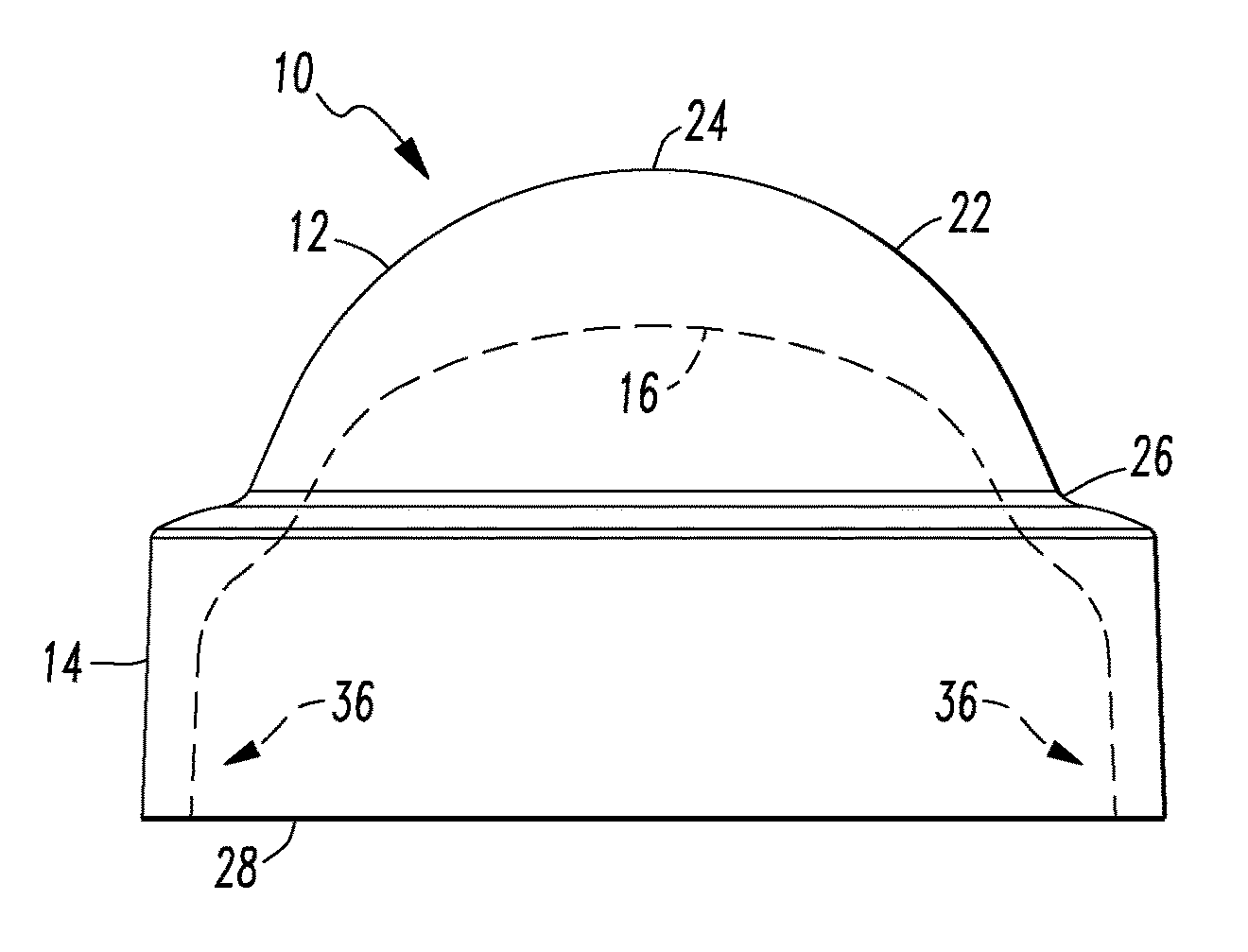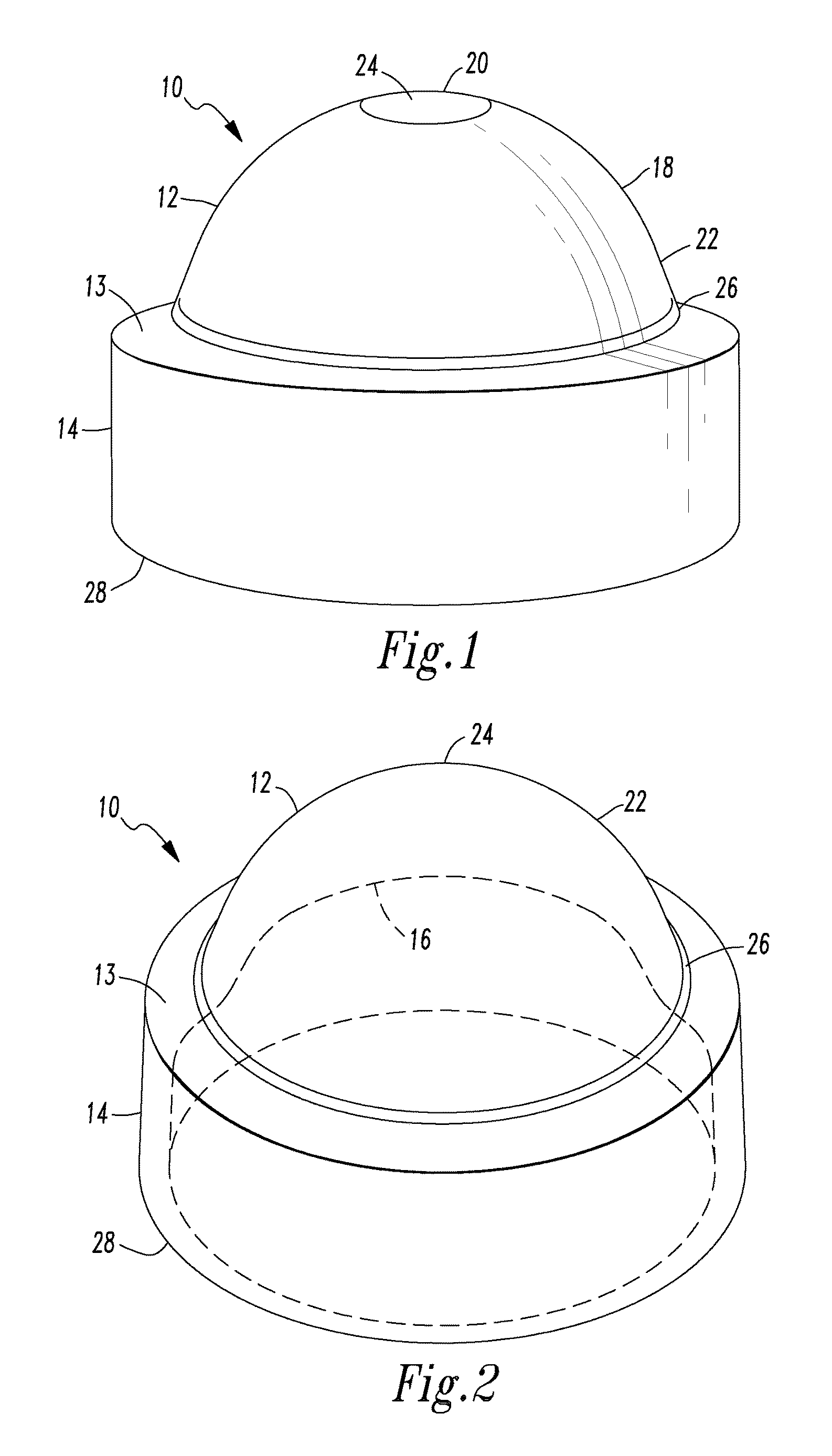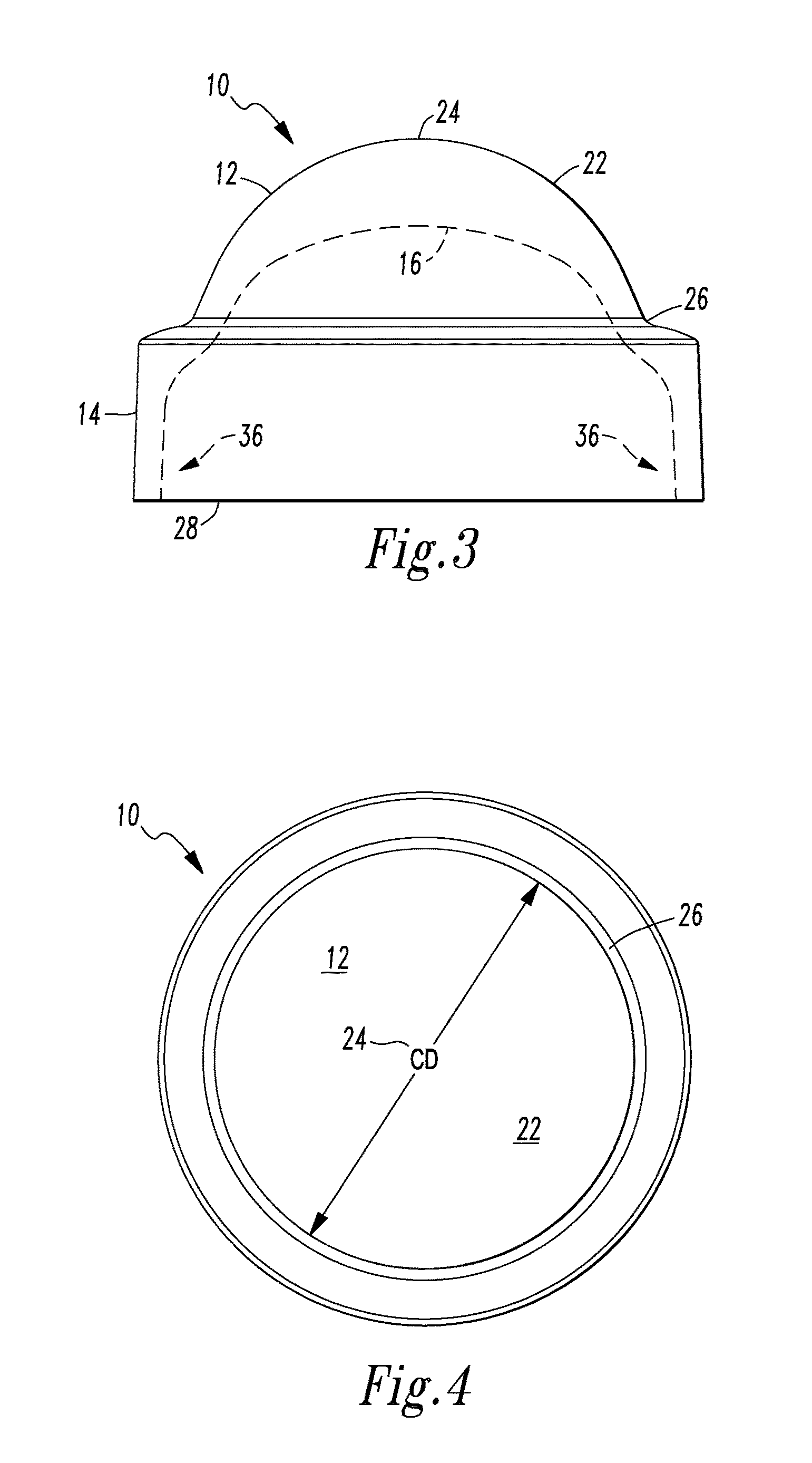Simulated eye
a technology of simulated eyes and eyes, applied in the field of simulated eyes, can solve the problems of not being realistic or easy to install, and the complexity of simulated eyes is more than necessary for most taxidermy or toy applications, and achieves the effect of improving the quality of life and reducing the difficulty of installation
- Summary
- Abstract
- Description
- Claims
- Application Information
AI Technical Summary
Benefits of technology
Problems solved by technology
Method used
Image
Examples
Embodiment Construction
[0026]Referring to the drawings, a simulated eye is illustrated. As illustrated in FIG. 1, the simulated eye 10 includes a cornea portion 12, a scleral band 13, and a positioning band 14. The cornea portion 12 includes a concave interior surface 16 (FIGS. 3 and 5) that can be painted to resemble an iris 18 and pupil 20 of the taxidermy animal, or the animal or human to be modeled. Although the illustrated example of the pupil 20 is round, other shapes may be used without departing from the scope of the invention, for example, the elliptical pupil of some species of ducks. The simulated eye 10 can be made from any suitable transparent material, such as glass or transparent polymer. Clear acrylic is a preferred material. Good results have been obtained using Plexiglas 8N, which has an index of refraction of 1.49, which is advantageously close to that of a genuine eye. The combination of the structure described below and the index of refraction of the simulated eye 10 produce the desir...
PUM
 Login to View More
Login to View More Abstract
Description
Claims
Application Information
 Login to View More
Login to View More - R&D
- Intellectual Property
- Life Sciences
- Materials
- Tech Scout
- Unparalleled Data Quality
- Higher Quality Content
- 60% Fewer Hallucinations
Browse by: Latest US Patents, China's latest patents, Technical Efficacy Thesaurus, Application Domain, Technology Topic, Popular Technical Reports.
© 2025 PatSnap. All rights reserved.Legal|Privacy policy|Modern Slavery Act Transparency Statement|Sitemap|About US| Contact US: help@patsnap.com



